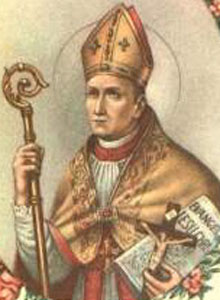
Marguerite d’Youville (1701-1771)
Image: Catholic Online
(Franciscan Media) Born in Canada Quebec, Marie Marguerite (Margaret) d’Youville, was the eldest of six children, her father died when she was just 7 yrs old according to the Vatican leaving her family in great poverty. — It was only through the influence of Marie Marguerite’s great-grandfather, that she was enabled to study for two years at Ursulines in Quebec, the oldest Catholic educational institution for Women founded in 1639
Upon Marie Marguerite’s return home, she became an invaluable support to her mother, undertaking the education of her brothers and sisters.
In 1722 Marie Marguerite married Francois d’Youville and the young couple made their home with her mother-in-law who made life miserable for Marie Marguerite and she soon came to realize that her husband Francois, had no interest in making a home life–his frequent absences and illegal liquor trading with the Indians, caused her much grief and suffering.
Marie Marguerite was pregnant with her sixth child when Francois took ill, she faithfully cared for him until his death in 1730–by the age of 29, Marie Marguerite had experienced desperate poverty and suffered the loss of her father and husband, together with 4 of her children dying during their infancy.
Through all of Marie Marguerite’s adversities, she grew in belief of God’s presence in her life and of His tender love for every human person. Marie Marguerite in turn, wanted to make known God’s compassionate love to all and undertook many charitable works with complete trust in God who she loved as a Father.
Marie Marguerite provided for her two son’s education (both later became Priests) she paid off her late husband’s debts and welcomed a blind Woman into her home. Marie Marguerite was soon joined by three other young Women who shared her love and concern for the poor.
On New Years Eve 1737 they consecrated themselves to God and promised to serve Him in the person of the poor. Marie Marguerite without even realizing it at the time had become the founder of the ‘Sisters of Charity of Montreal’ today known as the Grey Nuns today bringing care, comfort and love to the poor, the sick. abandoned children throughout North and South America.
Marie Marguerite always fought for the rights of the poor and broke with the social conventions of her day. It was during a move that made her the object of ridicule and taunts by her own relatives and neighbors. Marie Marguerite persevered in caring for the poor despite many obstacles. — In weakened health and while mourning the death of one of her companions, fire destroyed their home. This only served to deepen Marie Marguerite’s commitment to the poor.
On the 02 February, 1745 Marie Marguerite and two of her early companions, pledged themselves to put everything in common in order to help a greater number of persons in need. Two years later, Marie Marguerite was asked to become Director of the ‘Charon Brothers Hospital’ in Montreal which had been falling into ruin. With the help of her Sisters, they rebuilt the hospital, caring for those in most desperate human misery. — With the help of her Sisters and Lay Collaborators, Marie Marguerite laid the foundation for service to the poor of a thousand faces.
The hospital later was called the ‘General Hospital in Montreal’ becoming known as the ‘Hotel Dieu’ (House of God) setting the standard for medical care and Christian compassion.
In 1765 fire destroyed the hospital but nothing could destroy Marie Marguerite faith and courage. Marie Marguerite asked her Sisters and the poor who lived at the hospital to recognize the hand of God in the disaster and offer Him praise. — At the age of 64, Marie Marguerite undertook the reconstruction of a new hospital for the poor and home for her Sisters.
Totally exhausted from a lifetime of self-sacrifice, Marie Marguerite passed away on the 23 December, 1771 and is remembered as a loving mother who served Jesus Christ in the poor.
Marie Marguerite was Beatified in 1959 by Pope John XXII and Canonized in 1990 by Pope Saint John Paul II
More here from the Vatican
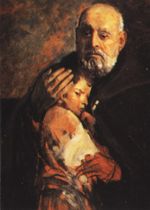

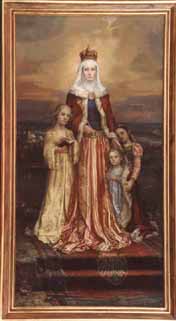
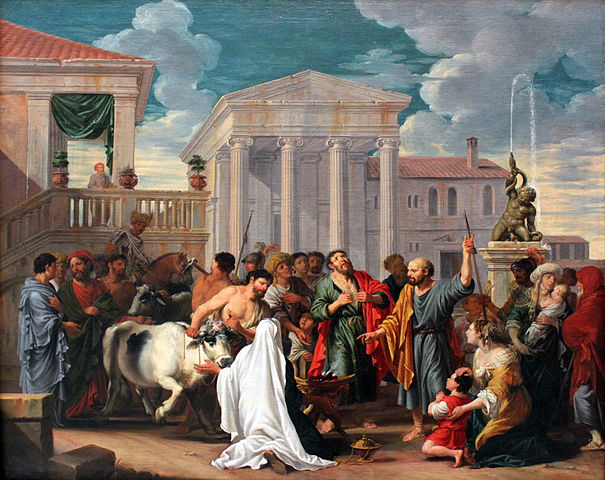 Saint Barnabas and Apostle Paul in Lystra
Saint Barnabas and Apostle Paul in Lystra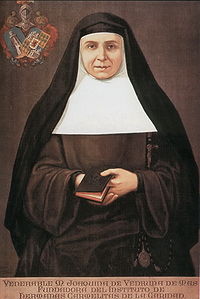 Saint Joachima (1783-1854)
Saint Joachima (1783-1854)
